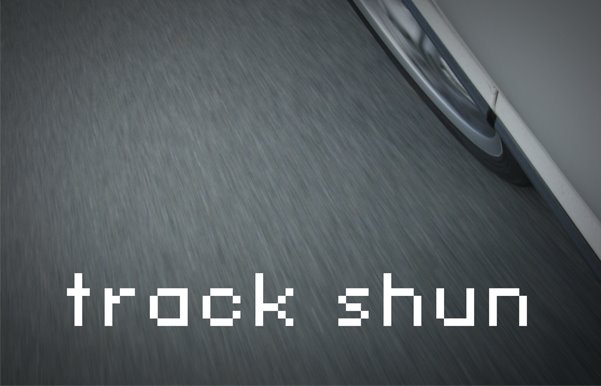skip to main |
skip to sidebar
As a child I used to play with Matchbox cars about as much as kids nowadays watch Ben 10. I.e, more than is healthy. Each car would have its own garage between the black keys of our beautiful, ancient piano. Probably my favourite would have been the Ferrari, which I now know was a 308 GTB. It was aggressive and confident; masculine yet feminine. It just stood out amongst all my other cars. So much so, in fact, that I've always identified myself as a Ferrari guy, as opposed to Lamborghini people, who grew up with Countach and Diablo posters adorning their bedroom walls.

A friend of mine recently imported a fibreglass-bodied blue Ferrari 308 GTSi Quattrovalvole from England, and due to a road accident, he unfortunately can't drive for a few months. Nick offered me a drive in the Ferrari, which was literally a dream I've wanted to fulfill since I used to wet the bed (a few months back). Naturally, I jumped at the chance.
Most Ferraris are so well designed, so proportionately perfect, that it's hard to get an idea of how big they are in the real world when you see them in print. Their latest Grand Tourers are monstrously huge, but their Enzo-era sports cars are surprisingly small. Pininfarina, and to a lesser extent, Bertone and Zagato, are masters at ensuring that overweight cars look like supermodels, and tiny cars have the desired amount of road presence. So, as I walked around the 308 I was about to drive, I couldn't help think how this Ferrari was the approximate size of my old NB MX-5. A concept I struggle with, even now.


Older Ferraris are known to be difficult to get in and out of, but the 308 wasn't all that hard. In fact, I almost enjoyed the small challenge. It's not as difficult as, say, a Lotus Exige to enter and exit, but it's challenging enough to make you aware that you're not just jumping into any old car. You know you're about to drive a Ferrari.
Turning the key produced nothing except a click and some faded lights on the dash. After spending almost an hour waiting for the Marshall Batteries man to come out and looking over the car to try and find the battery (FYI, it's under the spare wheel), we finally got it started. We enjoyed about 30 seconds before the car used the remaining petrol in the fuel lines. Customs had, of course, drained the tank. After a stint to the petrol station by the kind battery man, I was on my way.
With the car briefly warmed up, the dog-leg gearbox was fantastically stiff and notchy. It was a joy to use the chrome, gated shifter. The pedals are close together and off-centre and there is no dead pedal. This means that heel-toe downshifts come easily, but your left foot cannot relax is and is always at the ready. Another sign, then, that this is not a vehicle to pop down to K-Mart in.

But the engine told another story. In normal traffic, the car was positively placid. It was calm, easy to drive, comfortable. For the trip across town, I wondered whether drivers of the past were just pansies who got hard-ons for anything that looked a bit sexy. Except for the noticeable weight difference and quality interior finish, it didn't feel worlds apart from my 1979 Mitsubishi (Chrysler) LC Lancer fastback.
That was, until, I got to the other side Melbourne and onto the starting grid of a set of traffic lights, revealing an open, five-lane highway. Not wanting to destroy a Ferrari clutch, my launch wasn't particularly aggressive, but it was still surprisingly quick. The car pulled away from the lights with purpose and with a crescendo of metallic, roaring noise. Above 4,000 rpm the V8 mounted behind my left ear really came alive and planted all 240hp (179kw) to the fat Michelin TRX tyres at the rear. Gear changes aren't fast, but I'm sure practice would improve this. Through second and third gears, the Ferrari is wonderfully quick. I can only imagine it being akin to flying an old Spitfire. It's all about feeling connected with the entire car. You sit within it and become a part of it. Sitting so close to the ground just enhances the feeling of speed. It's a beautiful experience for a driving enthusiast.
As the rain set in, there was only one exciting moment when the back-end started to out-pace me through a long corner. The vehicle is so well balanced that it was easy to drive through the drift and correct it smoothly. Considering that the engine is mounted towards the back of the car and I was running on 30 year-old TRX tyres, I was surprised that was the only butt-clenching incident. Happily surprised. The brakes seemed fine, but in that weather I wasn't going to put myself in a position to test their full potential. The (non-powered) steering, though well weighted at speed, is unpredictably heavy and requires a bit of strong-arming when crawling along.
With dark clouds and teeming rain, I was able to get acquainted with the quirky electronics of the Italian sports car. I turned around and headed to my final destination, enjoying the pop-up headlamps (that are now extinct on modern cars) and charismatic window wipers. Yes, even the wipers on older Ferraris have character.
And that's really what this experience has taught me. Emissions laws, safety regulations, and the need for cars to be able to do everything imaginable has meant the driver is so detached from the modern car. People may look at owners of older, unloved Ferraris such as Mondials and 308 GT4s and think that they're badge snobs, but I'll know better. These cars have more charisma and driver interaction than damn-near all sports cars sold in the past decade.
Time to get my Matchbox cars out and start dreaming again.

Special thanks to Nick for the opportunity of a lifetime. Get well soon, mate.
The 2011 Australian International Motor Show. The impressive-sounding name almost implies that our market is respected by international automobile manufacturers. The unfortunate truth is that we're not. We get the old concept cars that have already done the rounds for the past year, and if we're lucky, we might get a left-hand-drive version of some model we probably won't ever see on our roads. This year was a prime example.
Not only that, but we only get the Motor Show in Melbourne once every two years now, as we alternate with Sydney because of financial concerns the car makers had. I can deal with that, though, as an annual show of the same cars does get a bit tedious.
But when my most anticipated manufacturer, BMW, doesn't bother to bring any cars that are on sale, I get annoyed. Their special eco-hybrid concept car thing, which came out ages ago, is not particularly interesting. I'm not allowed to sit it in, I'm not going to be buying the thing in the next couple of years, so it's really only a study in car design. Yes, it's a nice concept car, but it's not real. And that's what the Motor Show should be about.
We all read the specs in the magazines, look at the pictures, and watch the videos on YouTube. But the Motor Show is where you get to sit in and feel what each car is really like. Of course, it's not quite as good as driving them, but you're able to experience the ergonomics, the seating position, the slickness of the gearshifter, and the quality of the leather and plastics.
The new Range Rover Evoque was impressive, and as it's based on the Freelander2 that I so enjoyed, I imagine will be a cracking drive, too. As cool as it was, with Recaro-esque seats (without the bolstering), leather-trimmed dash, and huge moon-roof, the price-tag is still far too hefty for my liking. The Sport we looked at had two doors and was $127,000. Poor value.
The Mitsubishi Lancer Ralliart was good value when compared to the Evolution that sat next to it (if you made it to the top of the stairs without a sherpa). But drop the extra $10k on a Volkswagen Golf R, with real, thigh-bruising bolstering, blows the idea of the Lancer right out of the water.
Audi's R8 Spyder continues to be one of the most beautiful supercars on sale. The Audi designers should teach the Lamborghini designers what a curve is.
Mercedes-Benz had their new C63 coupe alongside their new CLS63 and SLS. The CLS was the most striking in it's red bodywork with big black wheels and beautifully designed interior. However, the SLS didn't draw on my emotions like the original 300SL Gullwing at the other end of the building. Most people walked past the "new" SLK without realising it was there. Mercedes-Benz will have a hard time against the Z4.
Despite not having many models for sale in Australia, Skoda put on a good show, even allowing people to sit in their (real!) rally car, which was nice. They continue to surge forward in Australia with ever-growing confidence.
Holden and Ford continue to copy everyone else as well as themselves (both releasing Black Editions, really?). At least FPV is learning that the subtler, the better.
There were a number of things I took with me after I'd left the Show this year. The first was that I was utterly disappointed that there was no BMW stand. No M3 Pure, no 1M, no M5. The second was the feel of the Mercedes-Benz G-Class, which, in my mind, won the award for best supporting actor. I loved how agricultural and secure the doors felt and how they didn't feel like doors on any other car at the show. My final thought was how I still yearn for a Maserati Quattroporte GTS. They are one of the most magnificently looking and sounding cars in the modern era.
A few years back I wrote two articles that looked at driver training for young people. Training Wheels, Part One and Part Two expressed my frustration at how young people are told not to speed and be idiots on the road, but are rarely exposed to the consequences. Unless they are forced to live through a horrific event, they don't realise just how easy it is to ruin or end a life by way of a car.
At the time, I said that it would be beneficial to expose kids to a crash. Strap them into a car and roll it, or even crash a car into a pole at 50kph in front of them. It sounds a bit far fetched, but it wouldn't be quite as hard to do as you would imagine.
So I was very heartened to see the NSW Premier leading an in-your-face demonstration for schools. As the video of the event shows, it was a very confrontational experience for the students, who had to graphically witness the death and trauma caused by a common road accident.
Bravo to the NSW Government for supporting this initiative.
When the Cayenne was released almost a decade ago it was somewhat controversial. The car was pretty ugly, it felt poorly designed, and it didn’t drive the way one would expect a Porsche to drive, SUV or not. We were expecting something better than the benchmark SUV at the time, the BMW X5, and it just wasn’t.
The second generation, all-new Cayenne is a different beast altogether. It seems to have shaken all previous criticisms and evolved into something worth pining for. Sitting in the supportive leather seat, the interior feels like it was based on Porsche’s four-door GT, the Panamera, which is no bad thing. The leather, plastics, and metal highlights really heighten the sense of luxury in the cabin. The buttons have an excellent feel to them, and none of the interior panels have that cheap hollowness to them that plagues cheaper (and not-so-cheaper) SUVs.
Porsche’s engineers really lifted their game with the new Cayenne. For sure, it’s nowhere near as rewarding to drive as its stable-mates, but as far as the luxury SUV sector goes, this is up there with the best of them. It’s a very easy car to drive on a daily basis and at no time do you feel as if you’re behind the wheel of the two-tonne tank that it is. There’s an overwhelming sense of weight and security behind this thing, but not at the expense of its handling or its pace. The Cayenne holds flat around corners and is beautifully neutral in feeling.

But it’s the engine that really impresses. The turbo diesel V6 strikes an almost perfect balance between power (176kw), torque (550nm), and fuel economy (7.4L/100 combined). The exhaust note isn’t as horny as the V8 option, but it means the car feels calmer to drive. That endless torque constantly invites your foot to sink into the pedal to propel the Cayenne down the road, in the same absurd fashion as the Range Rover Sport TDV6 or BMW X5 xDrive40d. It’s a very enjoyable machine to captain. Pulling up at the lights will trigger the auto stop/start feature which will turn off the engine to save fuel until you lift the brake, when the engine fires to life in an instant.
This particular Porsche also enjoyed keyless entry and start, which means that simply having the key in your pocket is good enough to jump in and drive off. The auto-tailgate was appreciated when carrying a few too many bags of groceries, and I’m sure the soccer mums with babes-in-arms will love it too. Handy features that make living with the Cayenne very easy. It doesn’t have the most luggage space in its market, but it has more than enough to satisfy most families. The ride height, coupled with its big doors, makes the Cayenne effortless to enter and exit.
If you’re looking at a practical, well-built SUV, it’s very hard to look past Porsche’s latest Cayenne diesel. It’s not going to break any land-speed records, but with a truckload of torque and CO2 figures that are better than a four-cylinder Mazda6, along with practical, real-world features and an excellent design, it’s very hard to ask for anything more in a luxury SUV.








